Methods and Strategies
Draw a Scientist
Uncovering students’ thinking about science and scientists
By Laura Beth Kelly
“Please draw a picture of a scientist doing science,” said the lead facilitator at a summer STEM (science, technology, engineering, and math) camp, who asked students to draw a scientist for the cover of their science notebooks. As I looked at the drawings by these diverse girls and boys in grades 3 to 5, I saw variations of the same illustration: a person in a lab coat pouring chemicals. When I asked students about their drawings, they described mystical chemists. This prompted me to think about what students think science is, who they think can be scientists, and where these often gendered ideas come from. Based on this curiosity, I photographed the students’ drawings of scientists and interviewed them. I asked students to tell me about their scientists, explain what the scientist was doing, whether they saw themselves as scientists, and explain why they had drawn a man or a woman. Forty-nine students (28 male and 21 female) participated.
For several decades, researchers have used the “draw a scientist” test to make inferences about the beliefs and stereotypes that children hold about scientists (Chambers 1983). These drawings often depict white, middle-aged male scientists with lab coats, glasses, and facial hair working indoors under sometimes dangerous or secretive conditions (Finson, Beaver, and Cramond 1995). Despite the recent emphasis on equity in science education and particularly women in STEM, children’s work still resembled that of earlier generations. This article provides an analysis of the students’ drawings and interviews and offers suggestions for teachers who want to broaden students’ ideas about science and scientists. (If you would like to try the draw-a-scientist test with your own students, see the sidebar for the steps involved with carrying out the activity.)
- Ask students to, “Please draw a picture of a scientist that shows what you know about scientists and their work.”
- Ask students to explain (orally or in writing) their picture and why they drew the scientist as they did.
- Hold an age-appropriate group discussion in which students compare drawings across the class and note common themes. They can even use the checklist from Figure 10, p. 89. Ask students to explain why they think many students represented science or scientists in a particular way (e.g., as males, as chemists).
- Look for resources in local groups, online, universities, and children’s literature to incorporate in the curriculum to broaden students’ understandings of science and scientists.
Student Drawing Overview
The typical student drawing included a scientist working alone in a lab with chemicals (Figure 1). Students described how scientists invent, mix, and pour chemicals but did not name specific chemicals or suggest an exact purpose for mixing them. Students also had misconceptions about the work of chemists, evidenced by the word potions occurring in their descriptions when I interviewed them as often as the word chemicals. Only one student drew a scientist working in a field different from chemistry (Figure 2). This student explained that scientists are explorers who hunt for fossils.
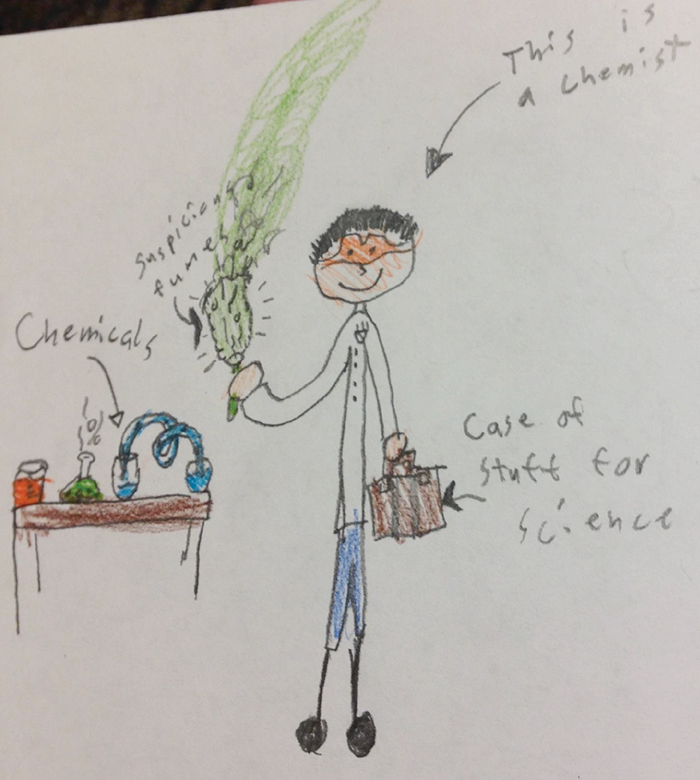
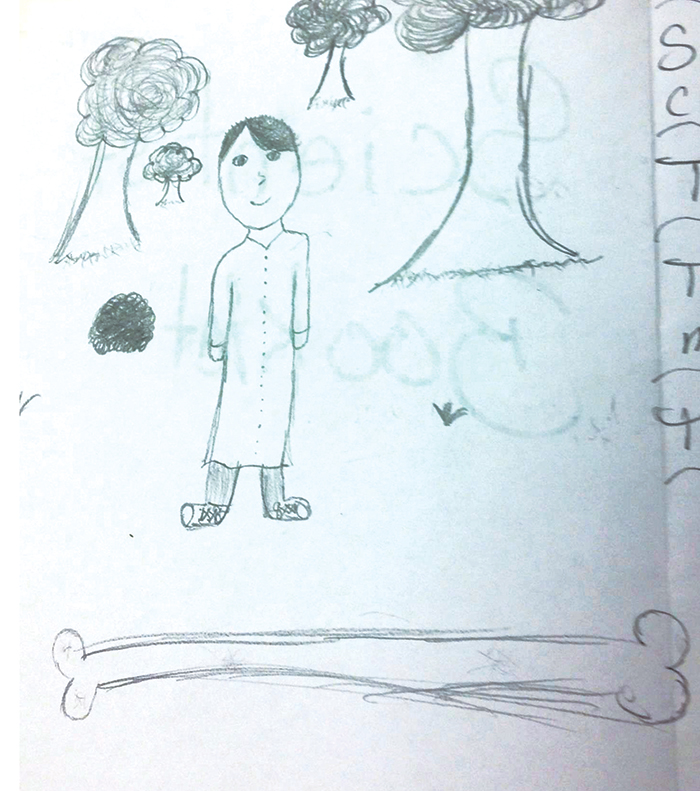
Student drawings did reflect the empirical and inferential nature of science (NGSS Lead States 2013), as most drawings and explanations detailed scientists engaged in experimentation. One drawing depicted a scientist researching a topic on a computer (Figure 3), showing that scientists build on existing theories. A student drawing of a scientist leaving an empty lecture hall after sharing his findings showed the social nature of science (Figure 4).
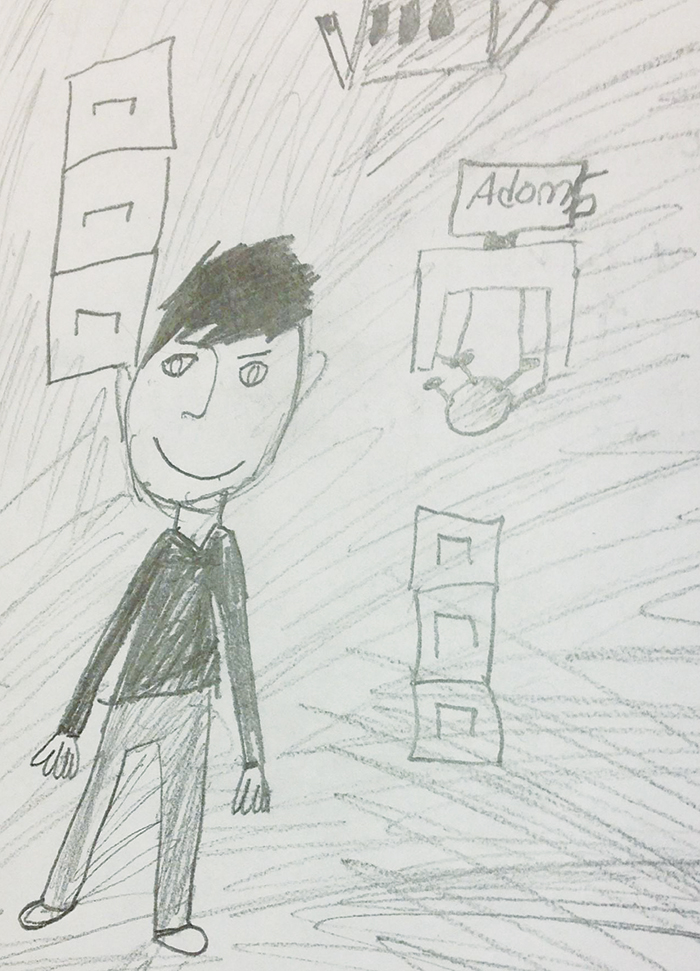
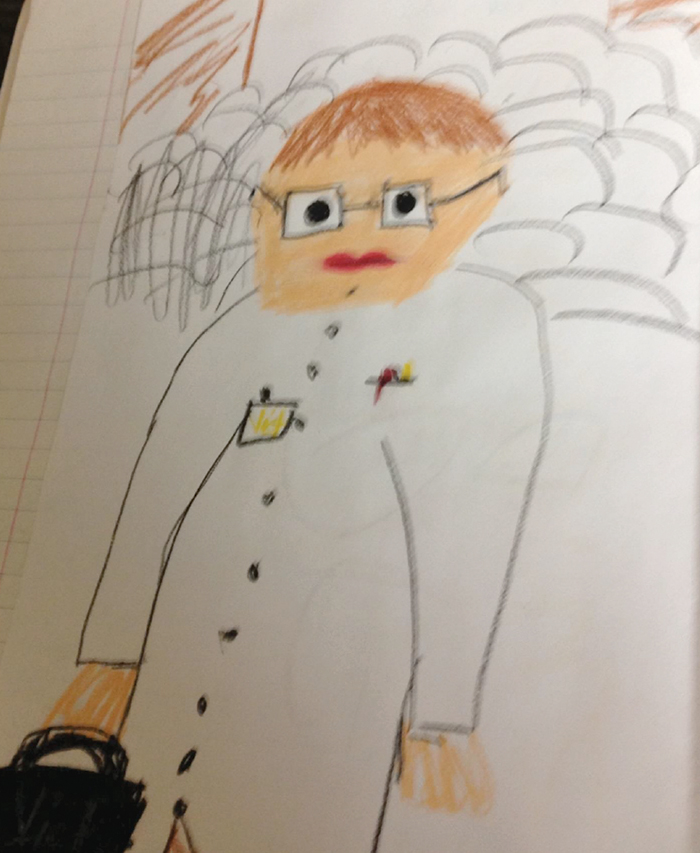
However, many of the student descriptions referred to the scientists as mad, crazy, or evil and using potions or making things explode (see Figure 5 for one example). The word “hair” occurred in students’ descriptions 12 times, with students often depicting scientists with wild hair (Figure 6) or reflecting some mishap in the lab. By and large, students’ drawings showed that they viewed science as a solitary activity in which scientists experimented with chemicals in sometimes dangerous ways.
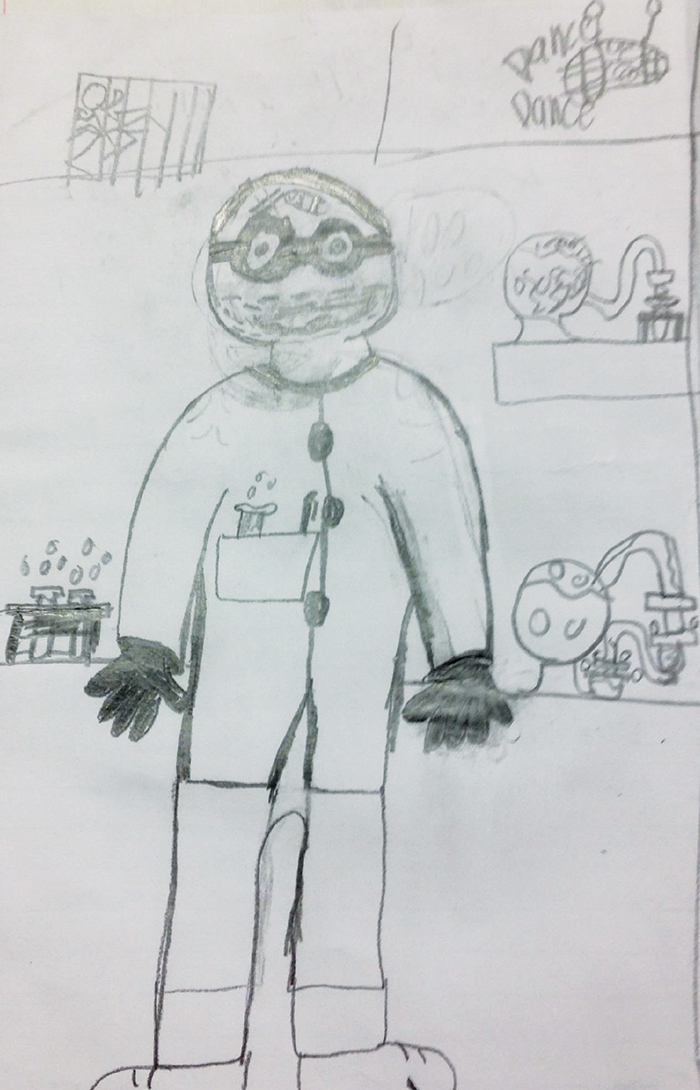
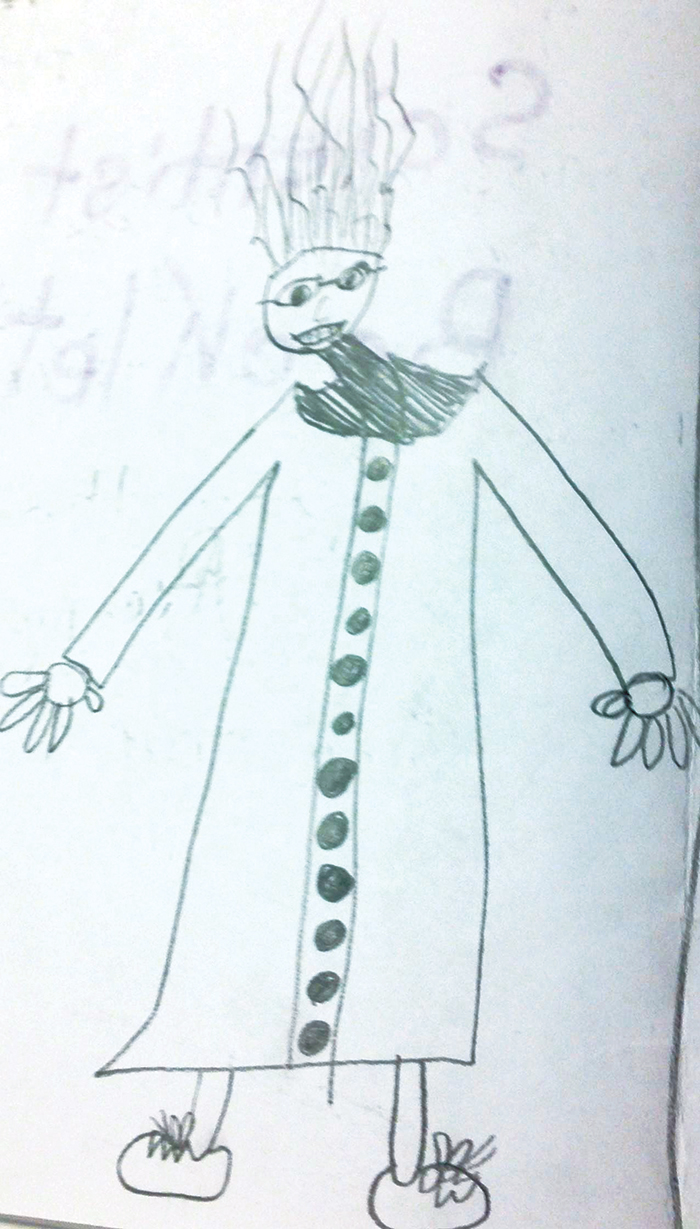
Who Can Be a Scientist?
Twenty-four percent of the class drew female scientists. All of the female scientists were drawn by girls. Generally, the female scientists did work similar to the male scientists (Figure 7, p. 88), and so the findings described above about chemistry, potions, and danger apply to the female scientists also (Figure 8, p. 88). A few girls drew scientists simply as people, not engaged in any particular scientific work. The only student who clearly attempted to draw a person of color was a female student (Figure 9) who drew a black female chemist that she described as working with potions.
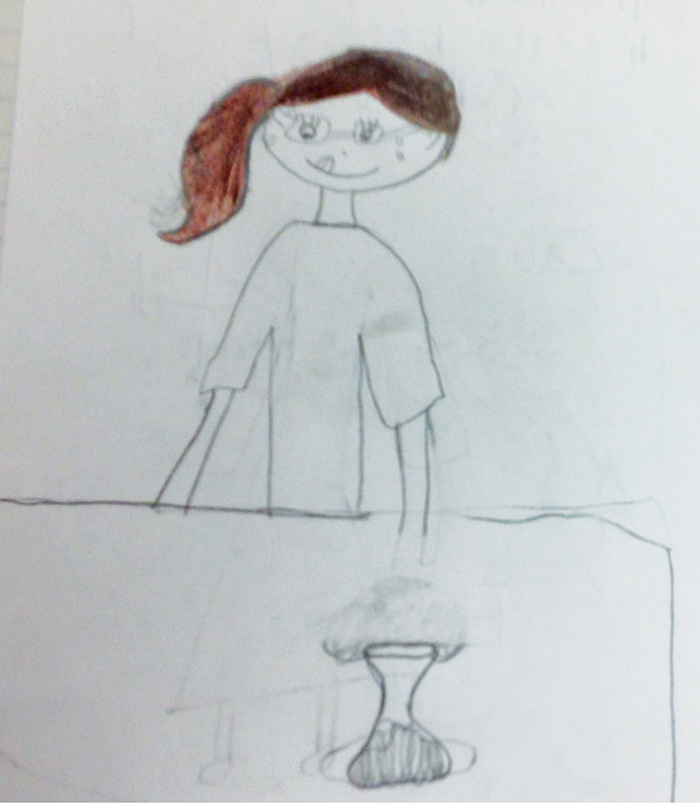
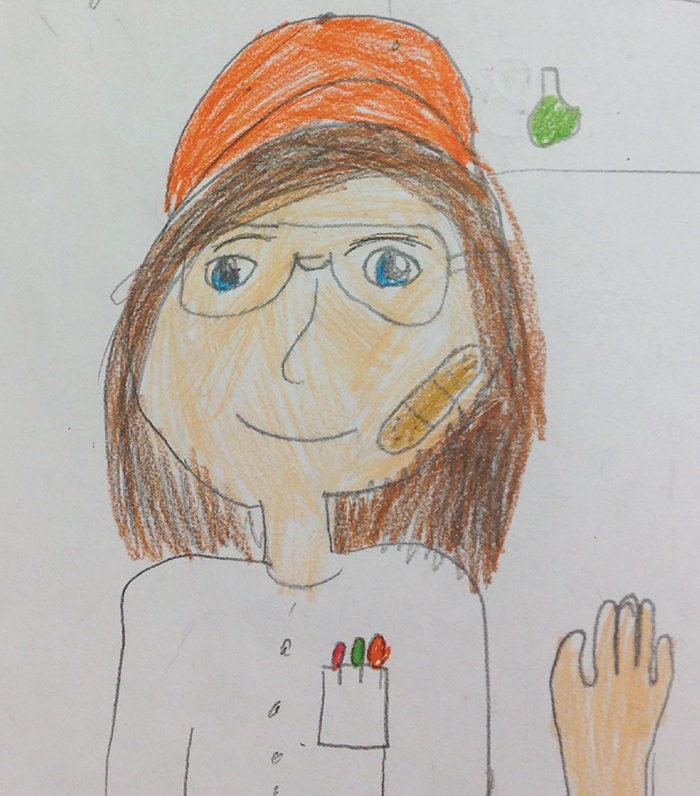
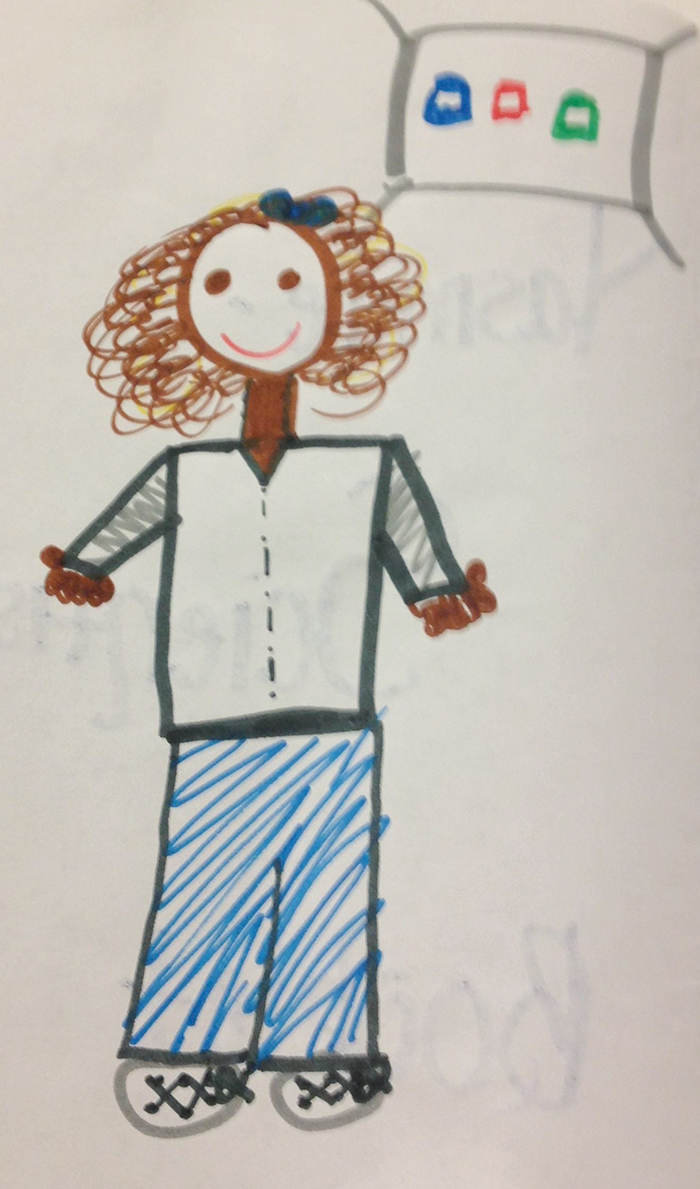
Seventy-three percent of students said they viewed themselves as scientists; this number includes both those who drew a scientist of the same gender as themselves and those who did not. Interestingly, several students said they did not see themselves as scientists because they envisioned working in another career and then went on to name a career within science (e.g., medicine). These comments reinforce the idea that young learners have a narrow conception of science. Some students who did not see themselves as scientists made statements such as “When I grow up, I do not see myself as a scientist in a lab” and “I don’t really like liquids and chemicals.” This limited view of science may restrict students’ interest in science and view of themselves as working in science in the future.
The Role of Gender in Science
Students either drew someone of the same gender as themselves or relied on a default or stereotype. In describing drawing someone like themselves, a female student said, “I kind of imagined myself.” When asked to elaborate why they drew a male or female scientist, students explained:
- “Usually men are scientists, not women, so I drew a man for my scientist.” (male student)
- “Because I just see more men than women. It’s just that I’ve never seen a girl one. And the boys find more things than the girl ones, I think. Like, they figure out more things to fix up.” (female student)
- “Because most [scientists] are [men].” (female student)
- “When I usually think scientist, I think man.” (male student)
- “I don’t really see girl scientists a lot, like on TV. I know they are there. That’s just the first thing that came to my mind.” (female student)
- “I never saw a scientist on the movies that was a girl.” (male student)
When asked to explain their choice to draw a male or female, a few students emphasized that they knew women can be scientists despite drawing men.
- “’Cause most scientists are male, but the rest are…some can be girls. It’s not rare or anything. It’s just that I don’t think many girls want to be scientists.” (male student)
- “A lot of scientists … well, I don’t know. I was going to say, a lot of scientists are boys, but that’s not true.” (male student)
- “[I drew a male] ’cause I was a boy, but I know there are lots of women scientists.” (male student)
These comments show that students are aware that males and females alike can be scientists and even reflect students’ desires to not appear to hold stereotypes. However, these comments also demonstrate that students’ first and dominant thought was scientists are men.
Expanding Students’ Notions of Science
Figure 10 shows a checklist of stereotypical features often shown in drawings. Teachers can use this checklist to evaluate the extent to which their students drew stereotypical images and to spark discussion with the students. There are several possibilities for teachers seeking to expand students’ notions of science and who can be a scientist. The strategies discussed below have been shown to have a positive impact on students’ views (Cakmakci et al. 2011; Hillman et al. 2014; Sharkawy 2012). These strategies include inviting scientists to the classroom (either literally or virtually), taking students on field trips to see scientists in action, and learning about the work of diverse scientists through children’s literature, videos, or other resources online.
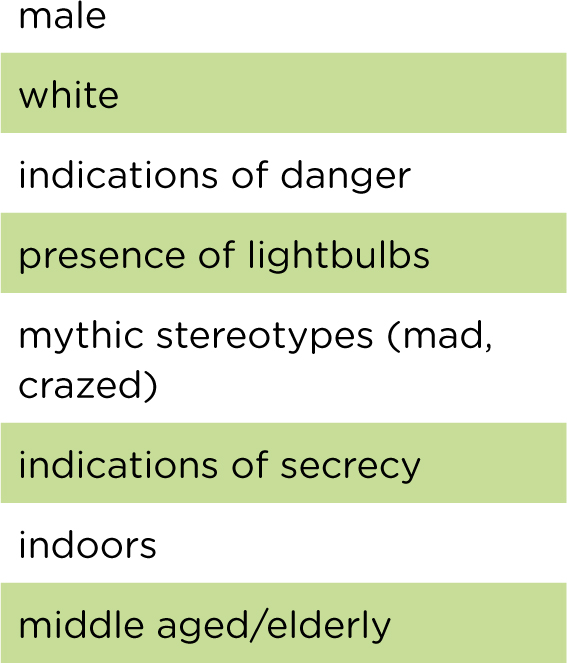
Connecting students to real scientists helps them learn about the diversity of those working in scientific fields. It simultaneously helps build a stronger understanding of the nature of science because, as students learn about what scientists do, they come to understand that scientific work involves more than mixing chemicals in a lab. Students learn about the ways that theory drives scientific inquiry and how scientists work collaboratively and creatively to address research questions of all sorts.
Teachers should invite local scientists to their classrooms because some children may not be aware of the diverse fields involving science. Local universities are a great resource. Some departments may have graduate students that would like to talk about their research to elementary audiences. Another option is local citizen groups, such as a chapter of an environmental preservation organization.
If university and community resources seem scarce, the internet offers a wealth of possibilities, including sites such as Ask a Biologist or Ask a Geologist. Teachers can connect their classes with distant scientists through email or a video calls, or they can show their students profiles of scientific work using YouTube or other online video. Children’s literature also offers many possibilities. The Outstanding Science Trade Books list produced every year by NSTA includes biographies of both male and female scientists (see Resources). In telling the stories of these scientists, the authors usually depict the nature of science clearly and help students see how scientists work in a range of scientific disciplines (Kelly 2018).
Conclusion
Young children often have an inherent interest in fun science activities but may have a limited understanding of how many diverse fields are included under the umbrella of science. They also may hold stereotypical views of what scientists do and who can be scientists. The draw-a-scientist test can help teachers uncover these views and engage students in science education that includes profiles of a variety of scientific fields and scientists. Students then develop a robust understanding of the nature of science and the career possibilities for would-be scientists that defy stereotypical images. When children break through stereotypes in science, they become informed citizens who understand the role of science in society. Breaking through stereotypes also allows children from all gender and racial backgrounds to see themselves (and people different from themselves) as contributors to science.


